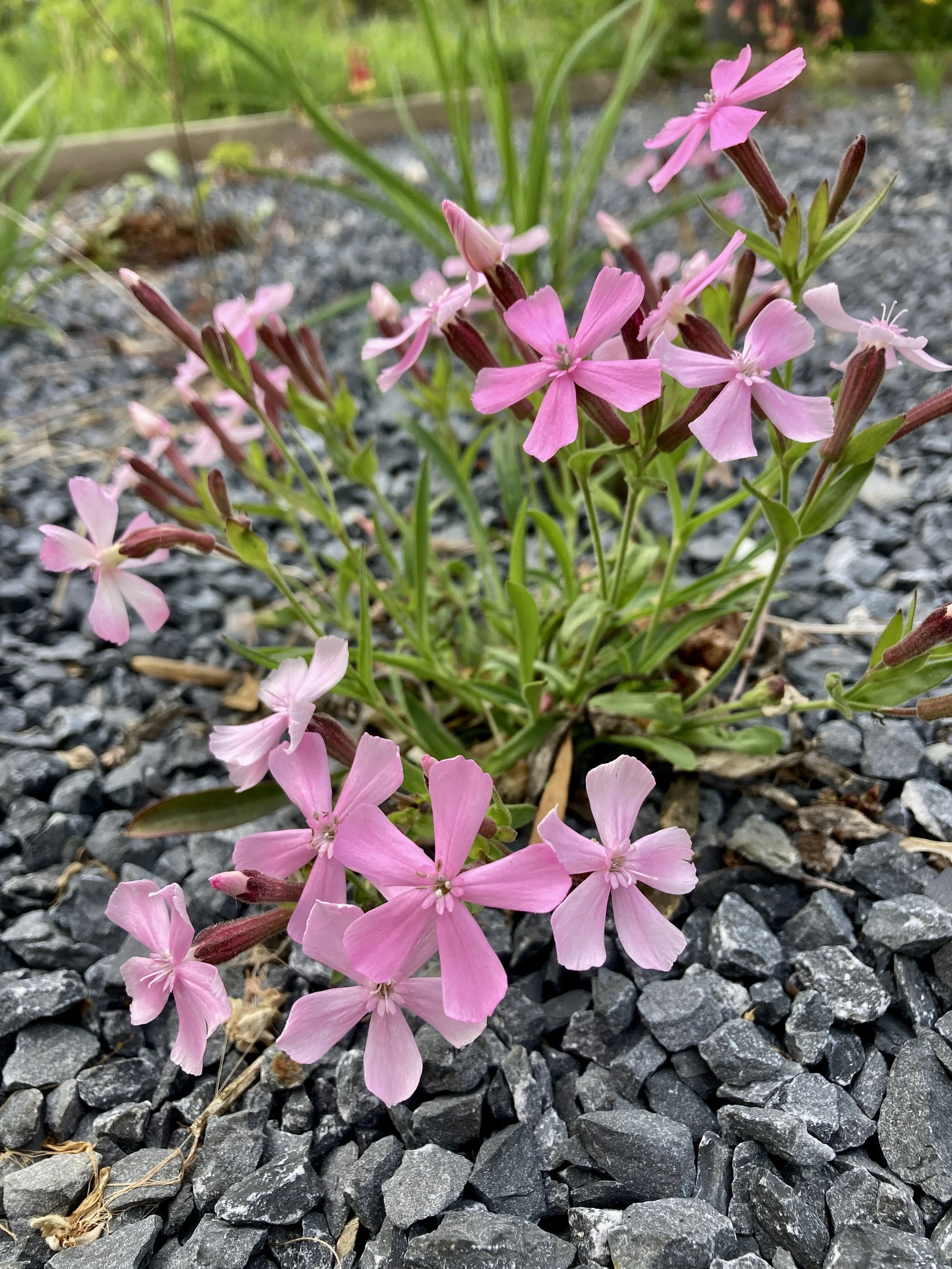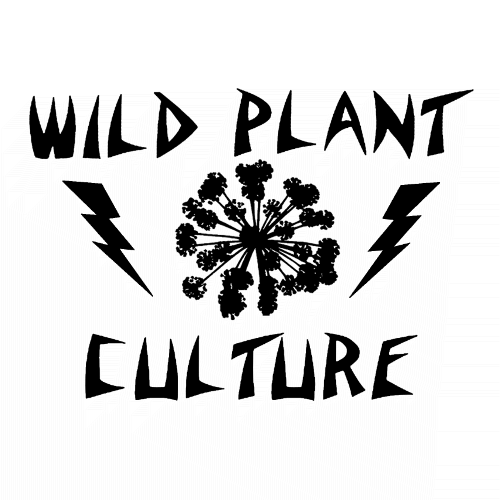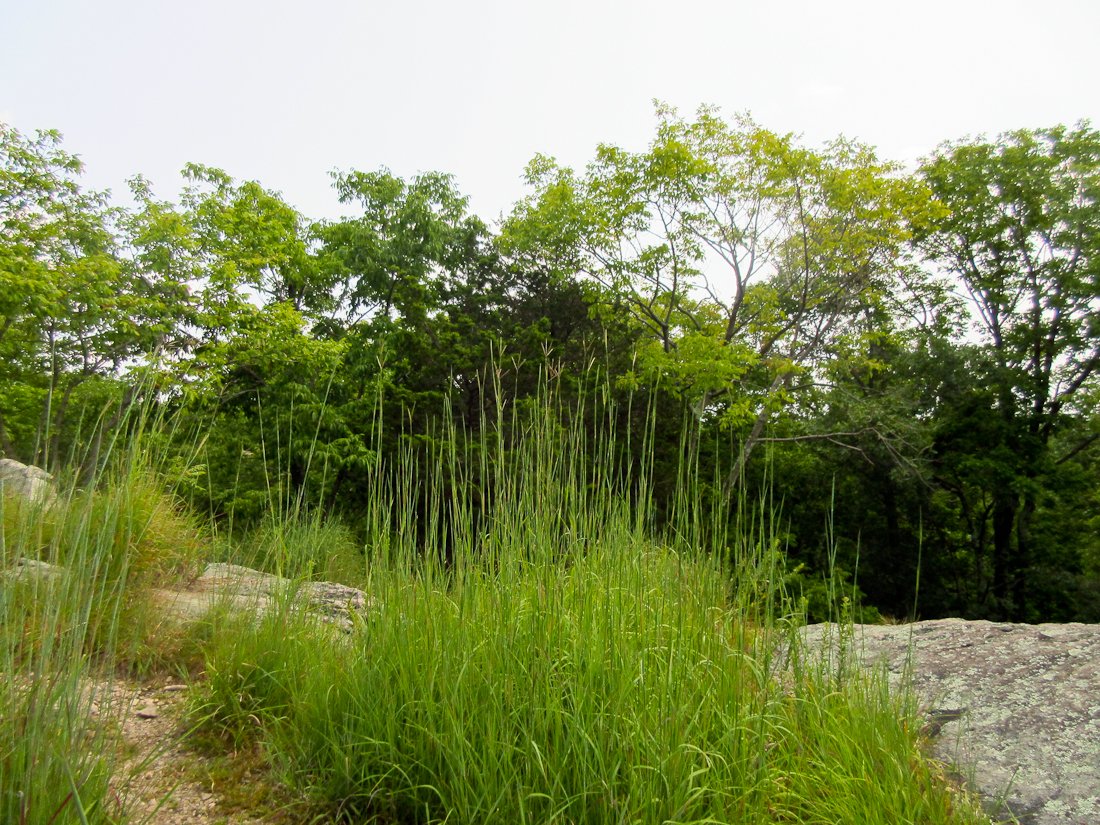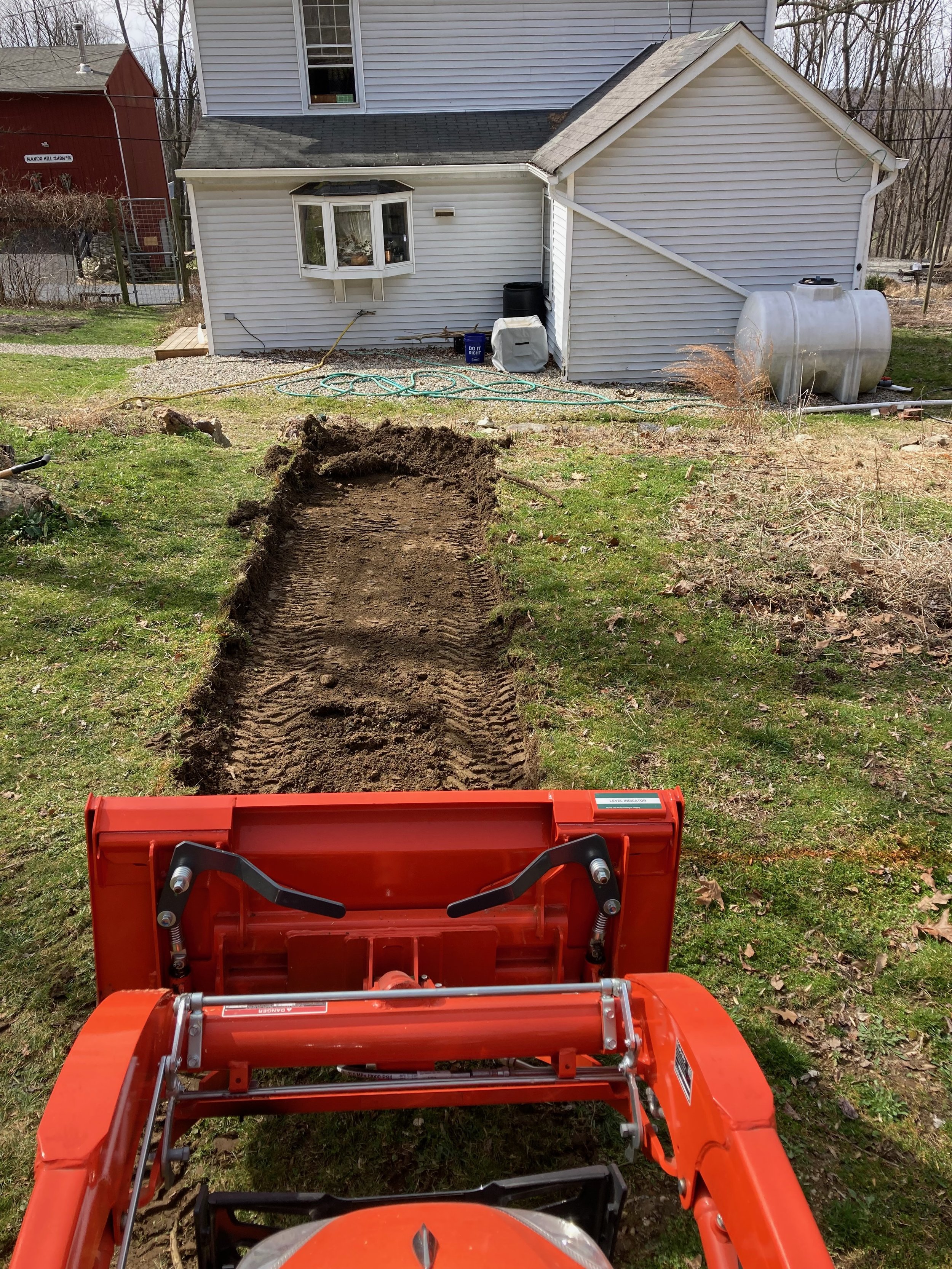Glades and Gravel Gardens

Glades are some of the most spectacular habitats in the East, and a gravel garden may be a way to bring some special glade plants home….
Our small family of three ascends the mountain trail. Everyone else is heading in the opposite direction, eyeing dark clouds blowing in from northwest.
Our eyes are firmly fixed on the trailside, searching among the oval leaves and gently zigzag stems of lowbush blueberry and black huckleberry. It's berry season!
As we ascend, we leave a dense canopy of black birch* and chestnut oak and enter into an open glade. Areas of bare rock open up little vistas, knit together by sprawling greenbriar and dewberry. These openings are punctuated by dwarf trees, open-branched and eccentric.
A few rain drops begin to fall and we shelter beneath a glacial erratic, a large horizontal boulder perched on another, creating a roof just big enough for our child to stay dry with two parents partway in and partway out.
Luckily there's no thunder and soon the shower passes. We're out on the trail and our quarry is in sight: acres of heath shrubs laden with fruit, occupying a series of open glades.
Glades are unique habitats, semi-permanent openings within forests, featuring few to no trees. All that extra sunlight, coupled with harsh conditions, can make for high levels of shrub and herb diversity, including many specialized and rare species. It also makes for amazing berry-picking.
When we get to the top of the ridge, we see that sheets of bedrock are exposed, and plants grow in swards between stone, like little gardens. Trees are rooted in fissures in the rock. Thin soil, bedrock and gravels alike are clad in a crust of lichens and moss. Soft domes of white cushion-moss alternate with the coral-like reindeer lichen that crunches underfoot. The trees are sparse and eccentrically shaped due to exposure to wind and ice.
This glade’s soils are derived from fairly nutrient-poor bedrock and glacial till. Along with the stunted chestnut oaks, scraggly pitch pines lean into the view, which encompasses a panorama of forested hills. Pink lady's slipper orchids are nestled in the duff near some scrub oaks. The whole summit is ringed with black huckleberry, with its bounty of small black fruits. Little bluestem is bending in the wind. It is sunny and warm now, but if we came back up here in winter we'd feel how wind and ice prune the trees and give them their unusual, bonsai-like shapes.
*For readability, only common names are used here. For a table of common and latin name equivalents, see the end of this article
Pitch pine glade, Silas Condict County Park, NJ
LONG-TERM OPENINGS WITH SPARSE TREES
Glades are persistent openings within otherwise forested habitat. They often result from the harsh conditions brought about by thin soils, bedrock outcroppings, and higher elevations. Summer temperatures on exposed bedrock can exceed 120 degrees in the Mid-Atlantic, and in winter the winds howl and the ice cracks all things, living and inert.
Glade plant communities offer a glimpse into moments in the vanished ecological past, when forest openings were maintained by cultural fires set by Indigenous peoples, and before that by the now-extinct Pleistocene megafauna (think mastodons and giant ground sloths) that once roamed our area. Forests in general had more open canopies at times in the past, but upland glades are now primarily found in areas where extensive exposed bedrock preempts development of a closed canopy forest.
Many glades are found on ridgelines, where glaciers shaved off the topsoil and rocky caps of hills over ten thousand years ago. Other glades can be found in the piles of gravel left behind by glaciers along the terminal moraine, or atop steep outcroppings of basalt formed from volcanic activity millions of years ago. Glades are places where deep time geological processes are conspicuous, and the ancient history of the land is reflected in the plant communities of today.
Glade at High Point, NJ
The plant communities found in glades meld forest and open grassland floras, and add their own distinctive species and structure. Glades are a fantastic habitat for small fruit trees (hawthorns, serviceberries, chokecherry, blackhaw), and fruiting shrubs (chokeberry, black huckleberry, lowbush blueberry, deerberry), which tend to flower and fruit abundantly given the paucity of canopy tree cover. The many small niches and the inhibition of large, aggressive species due to lack of fertility and water can make glades very diverse for wildflowers. The most diverse site I’ve ever worked in as a botanist was full of blooms from earliest spring through to late fall, starting with pussytoes, wild columbine, early saxifrage, roundleaf ragwort and rue anemone, growing to a midsummer profusion of woodland sunflower, upland boneset, and hoary mountain mint, and finishing with late purple aster and wavyleaf aster blooming among the showy seedheads of bottlebrush grass, woodland brome, and little bluestem.
Upland Boneset, Turkey Mountain, NJ (Eupatorium sessilifolium)
On The Rocks
If we visit a glade over limestone, one on granite, and another on diabase rock, we will see overlaps in the flora, and also significant differences. Glades over “poor” rock types can be very different in plant species composition than those over “rich” bedrock. The latter are frequently high in magnesium and calcium, with a higher pH, and include limestone, marble, dolomite, basalt, diabase, and amphibolite. “Poor” rocks usually produce acidic soils, are less abundant in some plant nutrients like calcium, and include rock types like granite (and granite relatives), many gneisses, some shales, as well as the silica sands found in the coastal plain.
Basalt glade, Watchung Reservation, NJ.
The upshot? While glades may look similar structurally, with sparse trees, abundant shrubs, dwarf herbs, and drought-tolerant grasses, the species in them can vary quite a bit depending on the underlying geology.
If you see a lot of wild columbine on a glade or cliff face, chances are pretty good there is some calcareous (calcium-rich) rock present. Some other indicator species for “rich” geology include plantainleaf pussytoes, roundleaf ragwort, upland boneset, woodland sunflower, and hoary mountain mint. Not always, but enough to begin making some good guesses.
On acidic soils, ericaceous shrubs like lowbush blueberry and black huckleberry are very common, together with poverty oat grass, Pennsylvania sedge, cowwheat, little bluestem and occasionally pink lady’s slipper orchid. Sometimes the diversity level over “poor” rock types is fairly low but the communities are highly distinctive, and dominated by native species due to the infertile conditions.
Rattlesnake weed (Hieracium venosum)
Rattlesnake weed is one of my favorite glade wildflowers. It is found in open glades and also in xeric woods on slopes. Its richly veined, fuzzy leaves hug the ground, reducing transpiration by avoiding the drying winds that sweep by just inches overhead. Many other glade species have adaptations against desiccation. Some have thin needle-like leaves, like the rare species whorled milkweed. Prickly pear cactus is found on glades, sheer cliffs, and in dunes along the coast. Like rattlesnake plantain, these species tend to be low in stature, slow-growing, guarded against harsh conditions rather than effusive in growth.
The harsh conditions of glades also lend themselves to the evolution of tough little woody plants that can survive drought and ice storm alike. Small-statured shrubs and subshrubs in glade habitats include running serviceberry, sand cherry, dwarf hackberry, New Jersey tea, Carolina rose, wild sarsaparilla, common juniper, dittany, and black chokeberry (in dwarf form).
Dwarf sand cherry on a glade in Morris County, NJ (Prunus pumila var. susquehanae).
Grasses and some upland sedges are particularly well-suited to dry, windy conditions, and glade species include little bluestem, poverty oat grass, slimleaf panic grass, and sideoats grama. The last is a common species of the western prairie and canyon country but is exceedingly rare in my home state of New Jersey, and much of the East.
Glades also host rarities because they have been inhospitable to forms of agriculture that involved soil disturbances such as plowing and crop seeding, which have erased pre-existing wild plant communities the world over. On glades, it is conceivable that some elements of plant communities have persisted for thousands of years, with ebbs and flows dictated by climate fluctuations and sporadic large-scale disturbances (or lack thereof).
Whorled milkweed on a basalt glade. (Asclepias verticillata, S2 species in NJ)
Mosses and lichen can thrive in the harshest conditions, so long as they are not smothered by leaf litter or excessively shaded by larger plants. One of the most beautiful aspects of glades are the crusts of bryophytes carpeting rocks and fine gravels. These often include cushion moss, haircap moss, reindeer lichen, and British soldier lichen.
A PRAIRIE CONNECTION?
Given the full sun conditions on glades, these habitats can host plant communities reminiscent of prairie habitats farther west. There may be a historical connection between the two. A period of warming sometime around 8,000 years ago brought hot, dry conditions. Dubbed the “Hypsithermal”, during this era prairie vegetation may have displaced forest as far east as Ohio, possibly spreading into Pennsylvania and New England and conceivably all the way across to the Atlantic Ocean[i]. This band was called the "Prairie Peninsula" by botanist Henry Gleason, who speculated as to its origin as early as 1922.
Many of the rare species in our area have affinities for open, prairie or savanna-like conditions. According to Candeias and Warren (2016), "[a]pproximately 30% of rare plants in Northeastern North America are remnant prairie peninsula species with fewer than 35 remaining populations."[ii]
In Pennsylvania, ecologists Roger Latham and James Thorne estimate that "38%... of the state-endangered species, 41%... of the state-threatened species, and 35%... of the species that have already been extirpated from Pennsylvania are characteristic of grasslands, meadows, and savannas."[iii]
In addition, 74% of state-listed butterflies, 38% of listed moths, and 15 bird species tracked by the state of Pennsylvania are obligate grassland species.[iv]
Big bluestem, a tallgrass prairie species, on an open glade.
GRAVEL GARDENING WITH GLADE SPECIES
Dwarf shrubs! Rarities! Delicious fruits, cacti, and diminutive wildflowers! The species of glades sound like they would be amazing in a home landscape or garden. And some of them are. But unless you live on a glade yourself, the very adaptations that make these plants unique and desirable can make them short-lived in garden conditions. Their low stature and slow growth mean they are easily outcompeted by garden plants from more fertile habitats. The very richness of a garden soil can sometimes mean a shorter lifespan for a plant adapted to low nutrient, infertile conditions. Some glade species require very good drainage around their roots and languish or die when “good” soils maintain excess moisture around their drought-adapted root structures, especially in wintertime.
A couple years back Margaret Roach did a podcast about gravel gardens. After hearing it, we decided to build one and populate it with our favorite local glade species. In the podcast, Margaret and her guest Jeff Epping talk about native prairie plants for gravel gardens; in adapting the gravel garden format to locally wild glade species I’m shifting the species palette a few states over, towards the Northeast and Mid-Atlantic.
My gravel garden features four or five inches deep of pure gravel placed above subsoil. In addition to great drainage, the gravel garden is fantastic for inhibiting weeds, as undesired plants are unable to seed in to the thick layer of gravel. With very little maintenance, the gravel garden offers a nearly weed-free habitat for specialized and rare native plant species, beautifully framed by rock and an orderly border. It’s pretty close to a perfect perennial garden.
In brief, the steps to creating a gravel garden are:
· Mark your area (I used spray paint on the pre-existing lawn)
· Remove the top 5” or so of soil from the entire garden site (a tractor helps)
· Frame the area. I used 2x6 lumber held in with short pieces of rebar but you might come up with something nicer.
· Fill the area with gravel to a depth of 5 inches. I decided to use crushed dolomite as I wanted to host species that like a calcium-rich soil. Margaret’s podcast guest Jeff Epping uses a quartzite pea gravel.
· Plant the garden using container plant material with pot depths close to 5” deep. Move gravel aside, place the roots in contact (or near) the subsoil, then push gravel around the root system. Water thoroughly, and as needed until plants are fully rooted.
Photos below show the creation of our gravel garden here at Wild Ridge Plants, as well as some of the beautiful results in years one and two of the garden’s existence.
Roughing out area
Removing turf and topsoil
Filled with dolomite gravel
Wild Pink (Silene caroliniana)
Bluets (Houstonia caerulea)
Butterfly milkweed with a very happy taproot! (Asclepias tuberosa). Perhaps more a dry meadow species than a glade species, but loves the gravel garden context.
Smooth Solomon’s Seal (Polygonatum biflorum var. biflorum). This is the most upland of the various native Solomon’s Seal species and varieties in our region.
Fireweed, primarily found further north than NJ but it was here once… (Chamaenerion angustifolium)
Sideoats grama grass, with late purple aster. (Bouteloa curtipendula and Symphyotrichum patens) The grass is state endangered in New Jersey, but is very common out West.
Plant Species of Glades and Gravel Gardens mentioned above
| Common Name | Scientific Name |
| Big bluestem | Andropogon gerardii |
| Black Birch | Betula lenta |
| Black huckleberry | Gaylussacia baccata |
| Blackhaw | Viburnum prunifolium |
| Bluets | Houstonia caerulea |
| Bottlebrush grass | Elymus hystrix |
| British soldier lichen | Cladonia cristatella |
| Butterfly milkweed | Asclepias tuberosa |
| Carolina rose | Rosa carolina |
| Chestnut oak | Quercus montana |
| Chokeberry | Aronia melanocarpa |
| Chokecherry | Prunus virginiana |
| Common juniper | Juniperus communis |
| Cowwheat | Melampyrum lineare |
| Deerberry | Vaccinium stamineum |
| Dewberry | Rubus flagellaris |
| Dittany | Cunila origanoides |
| Dwarf hackberry | Celtis tenuifolia |
| Early saxifrage | Micranthes virginiensis |
| Fireweed | Chamaenerion angustifolium |
| Greenbriar | Smilax spp. |
| Hawthorns | Crataegus spp. |
| Hoary mountain mint | Pycnanthemum incanum |
| Juniper haircap moss | Polytrichum juniperinum |
| Late purple aster | Symphyotrichum patens |
| Little bluestem | Schizachyrium scoparium |
| Lowbush blueberry | Vaccinium pallidum |
| New Jersey tea | Ceanothus americanus |
| Pearly everlasting | Anaphalis margaritacea |
| Pennsylvania sedge | Carex pensylvanica |
| Pincushion moss | Leucobryum album |
| Pink Lady's slipper | Cyprepedium acaule |
| Pitch pine | Pinus rigida |
| Plantainleaf Pussytoes | Antennaria plantaginifolia |
| Poverty oat grass | Danthonia spicata |
| Prickly pear cactus | Opuntia humifusa |
| Rattlesnake weed | Hieracium venosum |
| Reindeer lichen | Cladonia rangifera |
| Roundleaf ragwort | Packera obovata |
| Rue anemone | Thalctrum thalictroides |
| Running serviceberry | Amelanchier stolonifera |
| Sand cherry | Prunus pumila var. susquehanae |
| Scrub oak | Quercus ilicifolia |
| Serviceberries | Amelanchier spp. |
| Sideoats grama | Bouteloa curtipendula |
| Slimleaf panic grass | Dichanthelium linearifolium |
| Smooth Solomon's seal | Polygonatum biflorum var. biflorum |
| Upland boneset | Eupatorium sessilifolium |
| Wavyleaf aster | Symphyotrichum undulatum |
| Whorled milkweed | Asclepias verticillata |
| Wild Columbine | Aquilagia canadensis |
| Wild pink | Silene caroliniana |
| Wild sarsaparilla | Aralia nudicaulis |
| Wintergreen | Gaultheria procumbens |
| Woodland brome | Bromus pubescens |
| Woodland sunflower | Helianthus divaricatus |
Footnotes
[i] For a robust discussion, see Hamilton, K.G. A. "Unraveling the Enigma of an Atlantic Prairie". Northeast Natural History Conference 2011: Selected Papers Northeastern Naturalist 19 (Special Issue 6):13–42. 2012
[ii] Candeias, M. and Warren, R. J. "Rareness starts early for disturbance-dependent grassland plant species". Biodivers Conserv (2016) 25:2771–2785
[iii] Latham, R, and Thorne, J. Keystone Grasslands: Restoration and Reclamation of Native Grasslands, Meadows, and Savannas in Pennsylvania State Parks and State Game Lands. 2007
[iv] Ibid.



















